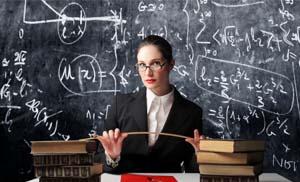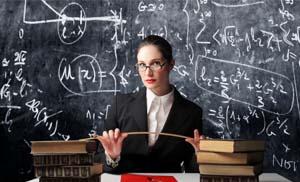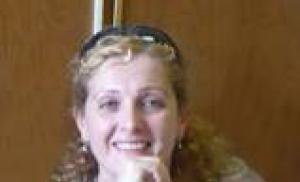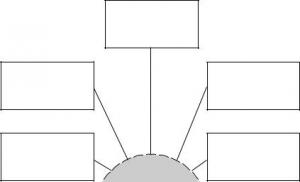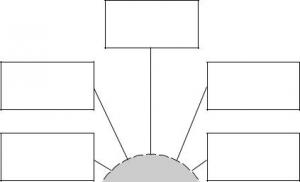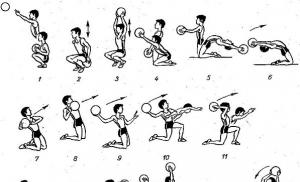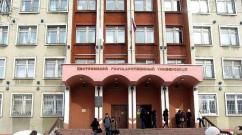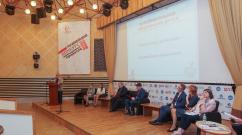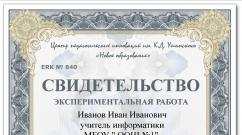Analytical report on monitoring at the end of the year. Sample analytical report on the results of monitoring in the dow according to the Federal State Educational Service
A sample of an analytical report on the results of monitoring to determine the level of development of the educational program by children of preschool age.
Description: I bring to your attention a sample of an analytical report on the results of monitoring the determination of the level of development of the educational program by children of preschool age.This material will be of interest to senior educators.
Municipal budgetary preschool educational institution of Aksai district Kindergarten No. ........"..........................."
P.......................
Analytical reference
(according to the results of monitoring the determination of the level of mastering by children of preschool age of the educational program "......................" ……………….. group)
Date:…….0…..20………..y. to …….0….20…….g.
Target: identification of the level and dynamics of development of children over the past 20….. – 20……. uch. year, as well as the design of the educational and educational process for 20 ... .. - 20 ... .. academic year and correctional and developmental work during the summer health campaign.
Conduct form: individual and subgroup lessons.
Reporting Form: protocols and analytical reports on the age group.
Based on the results of the monitoring, the following was revealed:
1. The number of children who took part in the monitoring - ….. people (………..%), which is …….% more than in 20….-20… academic year;
2. The number of children who did not take part in the monitoring – … person (…..%), which is …..% less than in 20….. -20….. academic year;
3. Children who did not take part in the monitoring were absent due to illness. It is recommended to conduct monitoring with these children from 01.09 to 30.09.20……. of the year.
The general level of mastering the educational program by children
4. The indicator of a high level of mastering the program by children was - ……..%;
5. The indicator of the average level of mastering the program by children was - ……..%;
6. The indicator of the low level of mastering the program by children was ……….%.
A comparative analysis of the development of the educational program showed:
There is a positive (negative) dynamics of the general level of mastering the SEP by children in comparison with the 20…-20… academic year. (last academic year). In terms of the general level, the dynamics amounted to……% in comparison with 20.……-20…..ac.y. The high level of mastering the program increased (decreased) by ………%, the average level increased (decreased) by ………% and the low level of mastering the program increased (decreased) by ….%, which is confirmed by the data in the table.
The highest high-level indicators were obtained in the educational areas (B + C + B): “……………………………………………………………………” (…….% ), “…………………………………………………………………………..” (………..%),
Children showed the lowest results of mastering the program in educational areas “…………………………………………………………” (……..%),
«……………………………………………………………..» (………..%),
«……………………………………………………………………» (……….%).
The highest rates were obtained in the educational areas (B+C): “……………………………………………………………………” (…….%), “… ………………………………………………………………………..” (………..%),
«……………………………………………………………………………» (………..%).
In the last academic year, the highest results in the development of educational programs were obtained (B + C) in the educational institution “………………………………………” (…….%);
In the last academic year, the lowest results in the development of educational programs were obtained in the educational programs (B + C) “………………………………………” (…….%);
NGO “…………………………………………………………………………” (……..%);
NGO “…………………………………………………………………………” (……….%).
The overall result of the identified results and their dynamics showed:
……………………………………………………………………………………………………….
Conclusion:
The reasons for the increase (decrease) in the level of mastery of the SEP by children:
_______________________________________________________
Recommendations:
1. _______________________________________
2. _______________________________
3. _____________________________________________________
Signatures of educators …………………… groups: / full name
/ FULL NAME
Date…………………………….20…….y.
 Analytical reference on the results of diagnostics of physical development and emotional sphere of preschool
Analytical reference on the results of diagnostics of physical development and emotional sphere of preschool
Rosa Agleulina
Information on monitoring for the first half of the 2014–2015 academic year
Results monitoring mastering the program material for the first half showed that the children of the middle group No. 4 learned the material in educational areas at an average level.
Examined: 26 pupils.
Forms monitoring:
Child supervision;
Educational area "Social and communicative development"
The results are as follows:
High level: 0%
Middle level: 69%
Low level: 31%
69% have an average level, these are children who know how to design a game using a variety of materials (attributes, improvised material). Often they are the organizers of the game, they are able to accept a game problem situation, change their own role-playing behavior, show respect for peers and adults. Actively participate in the game, but do not follow the rules. Partially see their mistakes and correct them with the help of an adult.
Pupils who, in didactic games, cannot assess their capabilities in didactic games, do not know how to design their game, do not always follow the rules of the game, communicate only with adults, act with objects according to a show or a model, have a low level. We plan to pay more attention to enriching the plot of games, strengthening the ability to conduct role-playing dialogues, accept game tasks, and communicate with adults and peers.
Work. During the observation of elementary labor activity, it was revealed: Children dress and undress themselves. But toys, building materials, equipment are cleaned and kept in order in the group and in the kindergarten area, most often after a reminder from an adult.
Security. An analysis of the results on the formation of safe behavior showed that pupils are well aware of the elementary rules of behavior in kindergarten, they can tell how to cross the road correctly, explain the meaning of a traffic light. But there are children who do not know the rules of the road, traffic lights, the rules of safe behavior in nature, in transport.
Conclusion: continue to work with children in the educational field "Security" through didactic games, conversations, game situations, reading books with problem situations, arouse children's interest in this topic through project activities.
Physical development
High level: 0%
Middle level: 23-88%
Low level 3-12%
Analyzing the results of the diagnosis of pupils on the formation of KP, it was found that children are able to dress quickly, eliminate disorder in clothes with the help of adults. However, children do not have enough initial ideas about the importance of morning exercises, about observing the daily routine. There are children who need to pay attention to strengthening the skills of neatness, the formation of personal hygiene skills, and ideas about a healthy lifestyle.
findings:
it is necessary to pay attention to the skills of cultural eating, to consolidate the skills of cultural behavior at the table (do not put your elbows on the table, drink and eat silently, chew food with your mouth closed, use cutlery correctly).
Educational area "Cognitive Development"
Analysis of indicators of the dynamics of the development of program material in the educational field "Cognitive Development" showed that the material was mastered mainly at an intermediate level.
The results are as follows:
High level1-4%
Middle level: 17-66%
Low level 8-30%
It is necessary to continue work on sensory development in various activities. Improve perception by actively using all the senses. Enrich sensory experience. Develop cognitive research and constructive activities. Form elementary mathematical representations. Learn to count to 5 using correct counting techniques. To form ideas about the equality and inequality of groups of objects based on the count. To form the ability to equalize unequal groups in two ways (adding and decreasing). Develop the ability to count objects from a large number. To improve the ability to compare two objects in size, according to two identical signs. To develop ideas about geometric shapes, the ability to correlate the shape of an object with geometric shapes. Develop the ability to identify spatial relationships. To acquaint with spatial relationships - far, close. Expand your understanding of the parts of the day. To create conditions for expanding ideas about the world around. Expand your understanding of nature.
Conclusion. In order to form cognitive interest in children, develop observation, mental activity, use TRIZA elements, didactic games, experimentation, and project activities to involve parents in their work.
Educational field SPEECH DEVELOPMENT
The results are as follows:
High level: 3- 11%
Middle level: 19-74%
Low level: 4-15%
results monitoring showed that it is necessary to develop free communication with adults and children. To develop all components of oral speech, practical mastery of the norms of speech. Develop the ability to coordinate words in a sentence. Fix the correct pronunciation of vowels and consonants. Continue working on diction. Improve your dialogue.
Educational field "Artistic aesthetic development"
The results are as follows:
High level: 0
Middle level: 17-65%
Low level: 9-35%
Most children can draw and name forms: rounded, rectangular (circle, oval, rectangle, square). Draw lines in different directions. They mastered the skills of drawing with a pencil and a brush, carefully paint over, use various materials. You should continue to form the ability to create decorative compositions. Learn to paint over drawings with a brush, pencil, mix paints. Continue to develop interest in modeling. To fix the techniques of accurate modeling, when sculpting objects, the proportions are violated, there is no clarity in the transfer of the form, the parts are not firmly fastened. Develop interest in the application. To form the ability to properly hold scissors, exercise in cutting round shapes. Develop children's creativity. Engage in fine arts
Variable part
High level -0
Average level-85%
Low level-15%
Analysis monitoring for the variable part showed that the highest result is observed for the regional component. The level of development in search and research activities is slightly less.
Child development monitoring.
In children, the level of development in terms of integrative qualities, the highest result is observed in the following integrative qualities: curiosity, activity emotionally responsive; physically developed. A slightly lower level of development in the following qualities, self-image, family, society and state; the ability to control one's behavior; mastering the means of communication; the ability to solve intellectual and personal problems.
Analysis monitoring on the variable part showed that the highest result is observed in search and research activities. The level of development in terms of the regional component is slightly lower.
Municipal preschool educational institution
« Kindergarten No. 14 "Solnyshko", Rtishchevo, Saratov Region
Analytical report
according to the results
final monitoring
middle group children
for the 2015-2016 academic year.
Prepared by the teacher:
Ivanova Olga Sergeevna
Rtishchevo 2016
In the middle group of MDEI No. 14 "Solnyshko", Rtishchevo, Saratov Region, final monitoring was carried out to solve the following tasks:
Identification of the level of formation of knowledge, skills and abilities in
: " Physical development","Social and communicative development", "Speech development",
"Artistic and aesthetic development", "Cognitive development", as well as identifying the level of development
integrative qualitiesat the time of the study;Summarizing the results of the study, comparing the results of the final diagnosis with the diagnosis at the beginning of the year;
Tracking the dynamics of children's development;
Identification of children lagging behind in the development of the educational program, as well as the reasons for their poor progress;
Summing up the results of the 2015-2016 academic year.
Used:
the following diagnostic methods:
- surveillance,
- analysis of products of children's activities,
- didactic games,
- individual conversations,
- solution of problematic (diagnostic) situations.
forms of pedagogical diagnostics:
- individual;
- subgroup;
- group.
The payroll of the group at the beginning of the academic year was 24 students, at the end of the academic year - 22 students, 21 students took part in the monitoring, which is 95.5% of the total number of students in the group.
The results of the final monitoring of the development of sections of the program
"Childhood" (educational areas) of the middle group
For the 2015-2016 academic year.
According to the indicators identified during the diagnostic examination, it can be noted that since the beginning of the year, in the process of developmental education, there has been a significant dynamics in the development of children, namely:
An analysis of the mastering of the OO program by children of the middle group allows us to draw the following conclusion:
Top scores
:According to the NGO "Physical Development":
High level - 62%;
Medium - 38%;
Low-0%;
Children began to confidently and actively perform the basic elements of the technique of general developmental exercises, basic movements, follow the rules in outdoor games and control their implementation, independently conduct outdoor games and exercises, began to more confidently navigate in space, perceive the show as a model for independent exercise, evaluate the movements of peers and notice their mistakes.
Children have improved indicators of speed-strength qualities, coordination, general endurance;
the need for physical activity, interest in the implementation of the elementary rules of a healthy lifestyle has formed;
skills were formed to independently and correctly perform the processes of washing, washing hands; independently monitor their appearance; behave for
table during meals; dress and undress independently, take care of their
things (things for personal use).
To achieve the highest performance in the educational field
"Physical development" it is necessary to organize joint activities and independent motor activities of children to develop skills in throwing, catching, throwing; outline work on the development of a more confident and active implementation of orientation in space.
The same indicators for the NGO "Social and communicative development":
High level - 62%;
Medium - 38%;
Low - 0%.
Children successfully learned:
norms and valuesaccepted in society, including moral and ethical values;
ways of communication and interactiona child with adults and peers during educational and play activities;
learned to establish role-playing relationships, create a game environment using real objects and their substitutes for this, act in a real and imaginary game situation; enrich the themes and types of games, game actions, plots;
become more independent, emotionally responsive;
began to show interest in game experimentation;
more clearly they began to follow the game rules in didactic, mobile, developing games; they formed a willingness to work together with their peers, the experience of game interaction was enriched;
developed a respectful attitude and a sense of belonging to one's family and to
the community of children and adults in the organization;
Positive attitudes towards various types of labor and creativity; the basis of safe behavior in everyday life, society, nature.
It is necessary to continue work on the development of playing skills in director's games, on the development of creative skills in inventing and creating plots of director's games with the help of toys and objects for showing to peers. It is also necessary to pay attention to games-experiments with various objects and materials.
Below are the results for the NGO "Cognitive Development":
high level - 57%;
average - 33%;
low - 9.5%.
Work in the educational field was aimed at developing children's interests, curiosity and cognitive motivation; the formation of cognitive actions, the formation of consciousness; development of imagination and creative activity; the formation of primary ideas about oneself, other people, objects of the surrounding world, about the properties and relations of objects of the surrounding world (shape, color, size, material, quantity, number, part and whole, space and time, movement and
peace, causes and consequences), about the small motherland and Fatherland, ideas about
socio-cultural values of our people, about domestic traditions and holidays,
about the planet Earth as a common home of people, about the features of its nature, diversity
countries and peoples of the world.
You need to pay attention to:
Development of the ability to establish links between the qualities of an object and its purpose, to identify the simplest dependencies of objects (in shape, size, quantity) and to trace changes in objects according to one or two signs;
develop ideas about your hometown and country;
development of the ability to compare objects by spatial arrangement (left (right), in front (behind ...)), determine the location of an object in a row (second, third);
determine the sequence of events in time (what comes first, what comes next)
from pictures and simple models.
According to the NGO "Artistic and aesthetic development" the following indicators:
High level - 52.3%;
average - 33.3%;
low - 14.5%.
Children developed an interest in handicrafts, illustrations in
children's books, small sculptures, unusual architectural buildings,
description of architectural objects in illustrations for fairy tales.
The skills of artistic and aesthetic perception developed: consistent
examining objects and works, recognizing the depicted objects and phenomena; the ability to see their expressiveness, to correlate with personal experience; highlight their sensory features, visually and tactilely examine toys, attractive objects, small sculptures.
Developed the ability to create an image of individual objects and simple
stories in different activities; in drawing, modeling to depict typical and
some individual features, in the design to convey spatial
structural features of the building.
Developed visual and expressive skills:
The ability to correctly position the image on a sheet of paper, highlight the main thing with color, size, location on the sheet; create distinctly basic shapes, compose an image from several parts, using the rhythm of spots, geometric
elements of a pattern, in modeling - by means of moldings, a pattern in a stack;
children learned to choose the color corresponding to the depicted object;
use a variety of colors; use color as a means of expression
character of the image.
Children have acquired more precise technical skills.
In drawing : the ability to select visual arts when reminded by the teachermaterials and tools, image methods in accordance with the createdway; the ability to confidently draw lines, stripes, rings, arcs; perform hatching;
work with a bristle brush, combine some materials.
In the application : mastering the available methods and techniques of cutting and breaking
applications; from stripes and cut out forms to make images of different objects.
Ability to use scissors correctly, carefully cut and paste parts;
the ability to use non-pictorial materials to create expressive
image.
in modeling : mastering some modeling techniques: pulling from a whole piece; topping; smoothing the surface of molded figures, the junction of parts; rolling plasticine in a circular motion of the hands into balls; rolling with direct movements of the hands into columns, sausages; pressing the middle of the plasticine ball, cylinder with your fingers.
In constructionfrom ready-made geometric shapes: ability to analyze
object, highlight the main parts and details that make up the structure. Creation
variants of familiar structures from ready-made geometric shapes;
from the theme constructordetails of different sizes:
ability to perform simple constructions; mastering methods of replacing forms, giving them stability, strength, using overlaps.
paper construction: mastering generalized methods of folding various crafts; gluing to the main shape of the parts.
Construction from natural material: the ability to see the image in the natural
material, make an image of the parts, use glue to fix the parts,
plasticine.
In order to achieve the best results, it is necessary to pay attention to the development of the ability to compose a new color tone on the palette, to apply one paint to another, to transfer certain details in the works;
on the ability to smear plasticine balls on cardboard, apply plasticine to the borders of the desired contour to create a flat plasticine picture on cardboard (plasticineography).
Reading fiction was aimed at:
Expanding the reading interests of children
getting pleasure from communicating with a book, the desire for a second meeting
with her.
Perception of a literary text
mastering the ability to listen carefully and hear a literary work,
sympathize and empathize with the heroes of the work, imagine
heroes, features of their appearance, some character traits, isolate
the actions of the heroes and give them an elementary assessment, explain the obvious motives
actions, with the help of the teacher to understand the general mood of the work.
Creative activity based on a literary text -
The manifestation of a desire to memorize poetic texts, retell familiar and
re-read fairy tales and stories based on illustrations and without them to other children
and adults, toys. Learn different ways to express your attitude towards
a literary work, its heroes: in a story, drawing, application, modeling; at
retelling and reading by heart the text; in different types of theatrical
activities.
It is necessary to pay attention to the ability to realize the importance of some means of linguistic and intonation expressiveness for conveying the images of heroes, attitudes towards them and events.
The lowest results were obtained for the NGO "Speech Development":
High level - 19%,
average - 61.9%,
low - 19%.
Work in this educational area was directed to the possession of speech as a means of communication and culture; enrichment of the active dictionary; development of coherent, grammatically correct dialogic and monologue speech; development of speech creativity; development of sound and intonation culture of speech, phonemic hearing; acquaintance with book culture, children's literature, listening comprehension of texts of various genres of children's literature; formation of a sound analytic-synthetic
activity as a precondition for literacy.
It is necessary to pay attention to the development of the ability to clearly pronounce the sounds of the native language, the correct pronunciation; development of the ability to retell fairy tales, compose descriptive stories about objects and objects, using pictures.
Use in speech of complete, common simple with homogeneous
members and complex sentences for the transfer of temporary,
spatial, causal relationships; use of suffixes and
prefixes in word formation; proper use of the ending system
nouns, adjectives, verbs for the design of a speech statement;
compilation of descriptive sentences from 5-6 sentences about objects and narrative
stories from personal experience; to develop the ability to compose narrative stories based on toys, paintings; compiling descriptive riddles about toys, objects of nature.
Analysis of the quality of assimilation by children of this group of individual integrative qualities allows us to draw the following conclusion:
The highest results are shown by children in mastering the following integrative qualities:
- "Emotionally responsive":
High level - 85.7%
Average - 14.2%.
Children respond to the emotions of loved ones and friends. Use in speech the words of participation, emotional sympathy, compassion to maintain cooperation, establish relationships with peers and adults. Experience the joy of communicating with animals and plants. Empathize with the characters of fairy tales. Emotionally react to works of fiction.
- "Having mastered the means of communication and ways of interacting with adults and peers" -
High level - 80.9%;
Average level - 19.04%
Most children actively show a desire to communicate with peers, need meaningful contacts with peers about toys, joint games, and common affairs. Speech contacts are longer and more active, the first friendships between children are being established. Children strive for self-expression in activities, for recognition and respect of their peers.
Children actively cooperate with adults not only in practical matters, but also actively strive for cognitive, intellectual cooperation with adults; they ask many questions of a exploratory nature.
Somewhat lower results in the development of the following integrative qualities:
"Inquisitive, active" -
high level - 66%,
average - 28.5%;
low level - 9.5%.
Most of the children are highly active and inquisitive. Children strive to establish connections and dependencies in nature, the social world. They own the basic methods of cognition, have some experience in activities and a stock of ideas about the environment, with the help of an adult, they are included in the activities of experimentation, research activities, naming properties and qualities of objects, features of objects of nature, combining objects and objects into species categories, indicating characteristic features.
“Physically developed, having mastered the basic cultural and hygienic skills"- high level - 61.9%;
Average level - 38%
Children's movements have become much more confident and varied. Children perform age-appropriate hygiene procedures, follow the elementary rules of a healthy lifestyle, talk about the sequence and the need to perform cultural and hygienic skills, strive for independence in self-service, set goals themselves and see the need to perform certain actions.
- "Able to manage their behavior, plan their actions based on primary value ideas, observing elementary generally accepted norms and rules of behavior" -
High level - 61.9%,
the average level is 38%.
Children have mastered different ways of activity, show independence, strive for self-expression. The behavior of children is determined by the requirements of the adult and the primary value ideas about "what is good and what is bad." With the help of an adult, children can outline actions aimed at achieving a specific goal. At the reminder of an adult, they try to adhere to the basic rules of behavior in everyday life and on the street.
- "Having Primary Ideas (General Awareness)" -
high level - 52%;
average - 38.09%;
low-9.5%.
Children know their first name (full and short), last name, age, gender. They are aware of some of their skills, knowledge, what they have learned. They seek to learn from an adult some information about their body.
They know the composition of the family, the activities of its members, talk about family events, holidays.
They have an idea about the professions of kindergarten workers. Know the name of the country and hometown.
The following integrative qualities turned out to be the least successful for mastering by children:
- "Able to solve intellectual and personal tasks (problems), adequate to age" -
high level - 47.6%;
average - 33.3%;
low - 19.04%.
Half of the children can apply the acquired knowledge and methods of activity to solve simple tasks set by adults, show interest in various types of activities, actively participate in them, use knowledge to solve intellectual and everyday problems.
“Having mastered the universal prerequisites for educational activity” -
high level - 47.6%,
These are children who are good at working according to the model, listening to an adult and completing his tasks, answering when asked.
Medium - 38.09%,
These children need a little help from an adult, leading questions to get the right answer.
Low - 14.2%.
These are children who find it difficult to work according to the model, do not know how to work independently, their work does not correspond to the plan. They need repeated repetition of the question.
- "Having mastered the necessary skills and abilities" -
high level - 47.6%;
These are children who have developed special skills and abilities necessary for the implementation of various types of children's activities.
average - 38.09%;
These are children who have minor problems in mastering special skills and abilities.
Low level - 14.2%.
These children need individual work on the formation of skills and abilities corresponding to children of middle preschool age.
To achieve high results in the course of the upbringing and educational process, problematic practical and cognitive situations were used, in which children independently applied the mastered techniques that contribute to the development of a system of various investigative actions, techniques of simple analysis, comparison, and the ability to observe.
For the development of children's independence, methods of an individual approach were used, which made it possible to pay attention to the real level of skills, which differ significantly in different children.
The main form of organization of children's activities is the game, therefore, preference was given to the game construction of their entire lifestyle.
An opportunity was also created for children's variable play activities through an appropriate subject-developing environment: a variety of toys, substitute items, materials for play creativity, rational placement of play equipment.
Game motivation was actively used. All types of developing educational situations took place either in the form of a game, or were composed of game techniques and actions. Due to the peculiarities of visual-figurative thinking of the middle preschool age, preference was given to visual, game and practical methods.
In children of this age, there is an active maturation and development of the emotional sphere: feelings become deeper, more stable. Therefore, by supporting them, situations were specially created in which children acquired the experience of friendly communication, attention to others. This is a situation of mutual support and help for children, showing attention to elders, caring for animals, caring for things and toys.
When interacting with preschoolers, several pedagogical positions were used:
- partnerships and collaborations;
- transfer of experience;
- seeking help from children.
Such interaction helps children to become independent and competent faster.
According to the results of the final monitoring (formation of knowledge, skills and abilities inmain educational areas, level of developmentintegrative qualities)in the middle group, the average was obtained:
55.6% of children have a high level,
Medium - 36.35%,
Low - 8.19%.
Elena Cheskidova
Information about monitoring results
Information on the results of monitoring the mastery of pupils of the MBDOU "Kindergarten No." with program material in educational areas in 2016-2017 academic year. year.
According to the annual work plan of the MBDOU for 2016-2017 a year in the period from May 15 to May 30, 2017, teachers of preschool groups, a senior teacher, a musical director conducted pedagogical diagnostics of the level of development of children of all age groups of preschool educational institutions in the areas of educational areas. A total of 139 children were examined.
results
The program material was assimilated by children of all age groups in all sections by 82.82%. 17.18% of the program material has not been mastered. The reasons for this phenomenon are varied.
Educational area "Cognitive development" mastered by pupils of all age groups at an acceptable and optimal level: according to the results of control sections, children of age groups showed a positive result in mastering the program material in the range from 65 to 93.61%, depending on the age group. The highest results in children of the older group No. 5 - 93.61%, the lowest in the early age group No. 1 - 65% The alleged causes of this phenomenon are diverse: individual characteristics of children, disadaptation, newly arrived children.
Educational area "Social and communicative development" mastered by pupils of all age groups at an acceptable and optimal level: according to the results of control sections, children of age groups showed a positive result in mastering the program material in the range from 75 to 94.01%, depending on the age group. The highest results in children of the older group No. 5 - 94.01%, the lowest in the 2nd younger group No. 3 - 75% The alleged causes of this phenomenon are diverse: individual characteristics of children, group organization of GCD.
Educational area "Speech development" mastered by pupils of all age groups at the optimal level: according to the results of the control sections, children of all age groups showed a positive result in mastering the program material in the range from 61.97 to 87.68%, depending on the age group. The highest results in children of the preparatory group No. 6 - 87.68%, the lowest in the 2nd junior group No. 3 - 61.97%. The alleged reason for this phenomenon is the age and psychological characteristics of children, the low level of cooperation with the family.
Educational area "Artistic and aesthetic development" mastered by pupils of all age groups at an acceptable and optimal level: according to the results of control sections, children of age groups showed a positive result in mastering the program material in the range from 77.29 to 86.71%, depending on the age group. The highest results in children of the preparatory group No. 6 - 86.71%, the lowest in the early age group No. 1 - 77.29%. The supposed reason is disadaptation, newly arrived children, insufficient stock of knowledge, age and mental characteristics.
Educational area "Physical development" mastered by pupils of all age groups at an acceptable and optimal level: according to the results of control sections, children of all age groups showed a positive result in mastering the program material in the range from 81.98 to 90.59%. The highest results in children of the preparatory group No. 6 - 90.59%, the lowest in the 2nd junior group No. 3 - 81.98%.
findings
The results of monitoring the mastery of pupils of a preschool educational institution with program material in educational areas are satisfactory, but at the same time they are quite heterogeneous: according to the results of control sections, children of all age groups showed a positive result in mastering the program in the range from 77.15% to 89.39% (all sections of the program in all age groups). The highest results for the NGO "Physical Development" - 85.36%, the lowest for the NGO "Speech Development" - 77.88%.
The supposed reason for this phenomenon is the insufficient implementation of a differentiated approach to children, the use of inefficient methods and techniques in work, the insufficient level of professional competence of teachers, and the lack of a system in work.
Teachers of all groups:
Systematically improve the level of professional competence of teachers in the implementation of the educational area "Speech Development" in the context of the implementation of the Federal State Educational Standard;
Conduct targeted work to improve the quality of mastering the program material in the educational field "Speech Development";
When planning educational work, take into account the results of monitoring;
Provide psychological and pedagogical support to parents through a system of non-traditional forms of interaction;
Implement a differentiated approach to children in order to improve the development of the program and the development of integrative qualities.
Prepared by:
Senior caregiver ___
Related publications:
"Analytical report" on monitoring in the senior group "Bees""Analytical report" on monitoring in the senior group "Bees" Conducted monitoring: Stolyarova E.V. - educator of MDOU "Ivushka".
Analytical report on the results of monitoring the achievement of planned results by children Analytical reference On the results of monitoring the achievement by children of the planned results of the development of the Program in ChDOU kindergarten No. 34 JSC.
Analytical report on the results of monitoring at the end of the year senior group (2016-2017) ANALYTICAL REPORT ON THE RESULTS OF MONITORING (senior group) MAY 2017 I. Introduction. 1. Characteristics of the group: Senior group: 28.
Analytical report on the results of the final monitoring of the development of the educational program by children in the younger group Analytical report on the results of the final monitoring of the development of the educational program by children in the younger group for the 2015-2016 academic year.
Analytical report on the results of monitoring the educational process and child development for the 2016-2017 academic year Date: May 2017 Prepared by: Gruzinova T. I., educator of MBDOU CRR - kindergarten "Golden Key" in Zernograd. List of the group:.
Analytical report on the results of monitoring the educational process in the first junior group for 2016–2017 Purpose: In order to determine the degree of assimilation of the educational program by children and the impact of the educational process organized in preschool.
Pukhkiy Ekaterina
Analytical report on final monitoring
Analytical report on monitoring results development of the program by pupils of the second junior group No. 8 MKDOU kindergarten No. 7 in Yemanzhelinsk for the 2016-2017 academic year.
The educational process in the second junior group is built on the basis of the main general educational program of preschool education "Birth to School" edited by N. E. Veraksa, T. S. Komarova, M. A. Vasilyeva.
In order to determine the degree of mastering the educational program by children and the impact of the educational process organized in a preschool institution on the development of children in the 2016-2017 academic year, monitoring achievement by children of the planned results of mastering the educational program. During the year this monitoring was held twice (October, April).
Persons who carried out monitoring: teachers Pukhkiy E. V. and Kuzminskaya D. M. Musical and physical education leader.
Group characteristic: at the beginning of the school year, the payroll was 20 children. At the end of the school year, the payroll was 18 children.
The educators of the group carried out monitoring in two directions: development of skills and abilities in educational areas and assessment of the development of integrative qualities.
The collection of information was based on the use of the following methodologies:
Systematic observations, conversations;
Organization of special gaming activities;
Getting answers to the tasks set through pedagogical situations;
- analysis products of children's activities.
Results data monitoring reflected in special tables of child development for 5 educational areas: speech development, cognitive development, social and communicative development, artistic and aesthetic development.
Program material on the educational field "Physical development (Healthy lifestyle, KGN.)»
Beginning of the year End of the year
Low level-2-10% Low level-0
Average level-18-90% Average level-15-83%
High level-0 High level-3-17%
Analyzing the results of the diagnosis of the pupils on the formation of the CGD, it was revealed that the children are able to dress quickly, eliminate the disorder in clothes with the help of adults. However, children do not have enough initial ideas about the importance of morning exercises, about observing the daily routine. There are children who need to pay attention to strengthening the skills of neatness, the formation of personal hygiene skills, and ideas about a healthy lifestyle.
However, during the next academic year 2017-18, attention should be paid to consolidating the basic healthy lifestyle skills in play activities, as well as through conversations, to improve personal hygiene and tidiness skills among preschoolers. It is necessary to purchase didactic material for the next academic year (talk cards) according to healthy lifestyle.
Analysis children mastering the program material of the educational field "Speech development"
Beginning of the year End of the year
Average level-11-55% Average level-11-61%
High level-5-25% High level-5-28%
The analysis showed that almost all pupils speak as a means of communication and culture, they accompany the game and everyday activities with speech. Enriched and replenished the active dictionary; development of coherent, grammatically correct dialogical speech; development of speech creativity; development of sound and intonation culture of speech, phonemic hearing; throughout the year, they were introduced to book culture, children's literature, without significant omissions they consistently retell small works. It is necessary in the next academic year to continue to work on enriching their vocabulary, consolidating the ability to conduct dialogues, a monologue, answer questions, accept game tasks, and communicate with adults and peers. Pay attention to the formation of independence, purposefulness and self-regulation of their own actions. 2 children need classes with a speech therapist to correct their speech. (It is necessary to develop free communication with adults and children. Develop all components of oral speech, practical mastery of speech norms. Develop the ability to coordinate words in a sentence. Pronounce vowels and consonants correctly.
Analysis indicators of the dynamics of the development of program material in the educational field "Cognitive Development".
Beginning of the year End of the year
Low level-3-15% Low level-1-5%
Average level-14-70% Average level-14-78%
High level-3-15% High level-3-17%
The analysis showed that the material is learned mainly at the average level, the children need corrective work of the teacher in the next academic year. The pupils revealed the development of interests, curiosity and cognitive motivation; formed cognitive actions, the development of imagination and creative activity; pupils can form primary ideas about themselves, other people, objects of the surrounding world, about the properties and relationships of objects of the surrounding world (shape, color, size, material, quantity, space and time, movement and rest, causes and effects, etc., about small homeland, about domestic traditions and holidays, about the peculiarities of nature.It is necessary in the next academic year to pay attention to familiarization with the outside world (houseplants, the quality and properties of objects and seasonal changes, with the subject and social world, sensory standards and elementary mathematical representations (orientation in space and time).It is desirable to acquire and expand didactic material on cognitive development in the 2017-18 academic year.
Analysis by educational field "Socio-Communicative Development".
Beginning of the year End of the year
Low-4-20% Low-2-11%
Average level-13-65% Average level-12-67%
High level-3-15% High level-4-22%
The material is mastered by preschoolers mainly at the intermediate level. Throughout the academic year, work was carried out to assimilate the norms and values accepted in society, including moral and moral values; development of communication and interaction between a child and an adult. Formed elementary ideas about what is good and what is bad, the basics of safe behavior in everyday life, in nature. In the next academic year, continue to pay attention to the communication skills of children, the ability to communicate with each other, give in to each other, follow the rules of behavior in kindergarten, increase knowledge about road safety, at home, in nature. Conduct individual, collective conversations, consider illustrations about the rules of conduct, analyze problem situations.
The average level is for children who know how to design a game using a variety of materials. (attributes, improvised material). Often they are the organizers of the game, they are able to accept a game problem situation, change their own role-playing behavior, show respect for peers and adults. Actively participate in the game, but do not follow the rules. Partially see their mistakes and correct them with the help of an adult.
Pupils who, in didactic games, cannot assess their capabilities in didactic games, do not know how to design their game, do not always follow the rules of the game, communicate only with adults, act with objects according to a show or a model, have a low level. We plan to pay more attention to enriching the plot of games, strengthening the ability to conduct role-playing dialogues, accept game tasks, and communicate with adults and peers.
Program material of the educational area "Artistic and aesthetic development".
Beginning of the year End of the year
Low level-3-15% Low level-1-6%
Average level-15-75% Average level-14-78%
High level-2-10% High level-3-16%
Most children can draw and name forms: rounded, rectangular (circle, oval, rectangle, square). Draw lines in different directions. They mastered the skills of drawing with a pencil and a brush, carefully paint over, use various materials. You should continue to form the ability to create decorative compositions. Learn to paint over drawings with a brush, pencil, mix paints. Continue to develop interest in modeling. To fix the techniques of accurate modeling, when sculpting objects, the proportions are violated, there is no clarity in the transfer of the form, the parts are not firmly fastened. Develop interest in the application.
In the next academic year, it is necessary to continue individual work on the formation of skills and abilities in visual activity, improve the technique of drawing, modeling, appliqué, and develop the creative abilities of students. Invite parents in their free time to consolidate the ability of children to distinguish colors.
Conclusion:
Comparative analysis of monitoring results at the beginning and at the end of the 2016-2017 academic year, it shows an increase in the assimilation of program material by children, that is, there is a positive trend in the development of the child in all educational areas. In general, the performance indicators of the program are within the medium and high levels. The percentage of pupils in need of correctional work has decreased. This means that the application of the work program in pedagogical practice has a beneficial effect on the results. final monitoring. Thus, educational activities in the 2nd junior group are implemented at a sufficient level. The positive result of the work done is obvious, the knowledge of children is strong. Preschoolers of the second younger group are able to use them in everyday activities.
